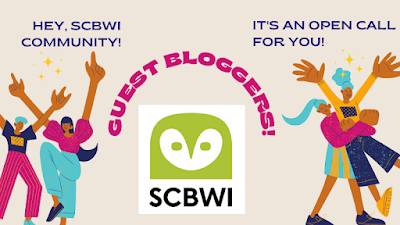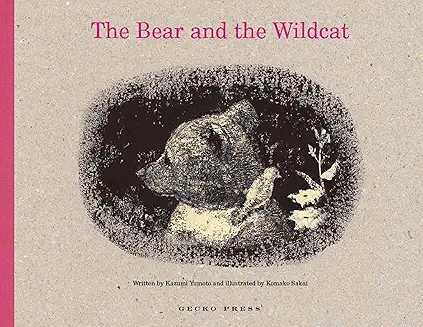Hello there!
My name is Justin and I am a pre-published author/illustrator based in NYC, with an enthusiasm for mermaids and all things folklore/whimsy. I've had the wonderful opportunity to join Team Blog for some of the recent SCBWI conferences, and so honored to be a guest blogger on the Official SCBWI Blog!
Here is a little bit about myself:
Born and raised in Staten Island and South Jersey, I grew up as a first-generation Liberian American, surrounded by culture, music, and GOOD FOOD! I've always had a creative spirit and loved reading, dancing, singing, and acting out plays with my cousins.
I LOVED Disney movies as a kid and I dreamed of creating the next Disney princess. So, with the original destiny of being an animator/illustrator, I went to school for Design until life took a major turn, and I found my escape through dance.
Today, I am a professional dancer of almost 12 years, having traveled worldwide. It still blows my mind that this little boy from the projects of Staten Island has danced at the Kennedy Center and even traveled all the way to Beijing for dance!
Performance has been a wonderful outlet for my creativity and I've loved teaching, performing, and even, choreographing.
For more information about my performance background, you can visit
www.justincampbellnyc.com.
BUT! With the pandemic and dance coming to an abrupt halt, my first love of visual arts began to whisper to me, and with a desire to be creative, I picked up the pencil once more.
But Justin—how did you get back into drawing after all that time? Weren’t you scared you’d be too rusty? That you'd have to stop dancing? That things would be different?
The answer is—YES!
I was definitely a little lost, with a smidgen of fear, and an inkling of insecurity mixed in there, but once I decided that I wanted to make children’s books, my brain switched gears and the first thing I thought was, let’s dive into what it takes.
So, I am a very organized, “Type A” kind of person, and I love a task, goal, or mission. You would think I liked homework a bit more as a kid but no...I didn’t—
BUT I digress! I was more of a Spy University kid, on a top-secret mission to CRACK THE CODE! What the code was back then? I dunno but today, it's—
AUTHOR ILLUSTRATING!
Recently, I took a personality quiz online (as all children of the iNtErNEt do) and...
I'm the "Architect," who are "imaginative and strategic thinkers, with a plan for everything," which was affirming because as creative, and playful as I can get, structure, planning, and strategy help me get to that childlike state of mind.
#KnowThySelf.
With that in mind, I began to shape my personal process to build SKILLS, ROUTINE, and MOTIVATION!.
In 2019, Lady Gaga won Best Original Song (“Shallow”) for “A Star Is Born,” and in her acceptance speech, she said, "There's a discipline for passion.” This phrase has stuck with me and since then, has reshaped and evolved into a deeper relationship with the word "discipline," and how it shows up.
In dance, discipline is just as important as technique, skills, and performance. We can all have passion but to me, discipline is an art in itself and all artists must have a relationship with it. It is a muscle you exercise. So as I transitioned into visual art, it was easier to shift and drove me to take a leap of faith to pivot.
Now I am actively pursuing my art, freelancing as an illustrator with the hopes of writing and illustrating my own children’s books while still dancing! BOOYAH!
Thankfully as I began my Pivot Journey (step aside Joseph Campbell, there's a new soup in town), I had a close friend and mentor steer me in the right direction. This friend kindly lent me Writing and Illustrating Children's Books For Publication: Two Perspectives by Berthe Amoss and Eric Suben which gave me absolutely amazing insight!
What I loved about this book was after every chapter, there were exercises given so the reader could apply what they’ve read.
Being a student at heart, I decided to read a chapter and work on the tasks every day at 5:30 am (morning person here) before my day started. I considered it a Children’s Book Boot Camp. I made my coffee, sat at my art table, and took notes.
This opened up ideas and pathways in my brain that helped funnel my creativity in a new way. I loved the routine of waking up and investing in my art which helped develop a strong relationship with my writing/artmaking.
Till this day, I go back to that particular notebook for reference whenever I feel stuck or need inspiration.
Now, I was on a roll and I borrowed another book, which I HIGHLY recommend to any artist who wants to understand composition in an easy and approachable way.
Picture This: How Pictures Work by Molly Bang
This book allowed me to understand how shapes, colors, and placement, no matter how simple, can invoke emotion and mood.
Using basic construction paper cutouts, Bang illustrates how simple composition can be. I KNOW! That's a wild statement to say out loud but the way she walks you through the decision-making reveals how accessible and approachable it is. Through this book, I learned, that simplicity is better.
Added THAT to my Handy Dandy Notebook!
With all of this DELICIOUS, NEW information, the pathways in my brain began to rebuild and brush off the dust of the many years of being away from art.
Soon, I found myself down the YouTube Wormhole, observing the process of other artists to see what worked for them as they continued their study, work, and creation.
That is where I discovered an artist duo, Kenzo and his mother, Mayko, who draw together and teach others along the way.
I joined their art community and there I’ve found some amazing resources, one being my favorite, and you've guessed it...
A CHART
A "Drawing Practice PLANNER"—Type A remember?
...no worries if you didn't ;)
The chart is a simple calendar to track habits but the layout spoke to me, and I’ve added it to my art tools. Focusing on each topic allowed me to hone my skills in a structured and methodical way. I've been using it for a few years and below is an example of the habit tracker. I highly recommend joining the LoveLifeDrawing community! There are so many resources for artists of all levels!
At this point, as the algorithm does, the more art I sought, the more I was suggested and I stumbled across:
And no, I'm not sponsored but a merman can dream!
Domestika is an online course platform that teaches different skills, not unlike Skillshare, which is another great tool. I love this platform and have been using it for the past four years to study all kinds of subjects!
This class walked me through the process of getting into the creative habit and discovering process and personal style. It allowed me to experiment with the plethora of art supplies I bought and was too scared to use (I know we all do this!) as well as build a library of the subjects/ideas around me. This gave insight into how JUSTIN draws (fill in the blank) which was SUPER useful, and fun!
It gave me a clearer understanding of what was at my disposal, and how I could use it to break out and create freely. We used different techniques and explored concepts through various exercises. I still go back and doodle in this sketchbook, with the ambition to fill it cover to cover.
(Prompt: Ghosts/Spirits)
So this is how I began my journey to become an author/illustrator. It gave me more confidence within the world of children’s books, and that notebook of inspiration, and process has since expanded. Since then, I've been introduced to SCBWI where I’ve attended several conferences since 2020, building community and increasing that knowledge. And I haven't looked back!
So DIVE IN, as we Merfolx say, and discover what discipline looks like for you! Explore techniques, research different approaches, and discover ways to PLAY, PLAN, and GENERATE your own ideas, style, and sensibility to grow your voice, and your process.
Build YOUR foundation and let that be the ship that guides you through the wild waters of creativity, creation, and bookmaking. Remember, it never hurts to have a versatile tool belt at your disposal.
Thanks for reading! I hope you found some nuggets of information in this blog, but more importantly, the inspiration to GO FOR IT! Special thanks to Lee Wind for having me guest blog! Soups grateful! Can't wait to share more next week!
For more about me, check out my illustrations
HERE and follow me on Instagram @themermancam and on
Bluesky!
Ciao!
 I felt empowered to tackle the behemoth that is THE PORTFOLIO!
I felt empowered to tackle the behemoth that is THE PORTFOLIO!





































